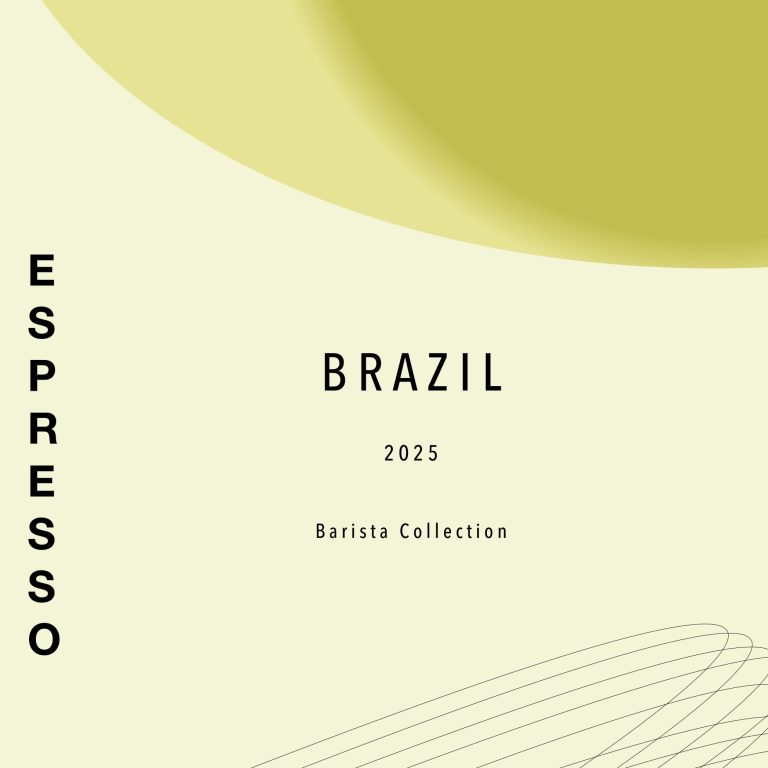Special Discount in Cart 10%
ESPRESSO Barista Collection / Brazil
£35.50

1 kg – High Volume (Home, Office, Shop)
Recommended for Espresso.
This special study includes all the substructures of the profile that has been prominent in our Coffee Roasting originality for a long time and used in our Barista experiences. In this product where aroma and body harmony is observed, there are many things for those who love medium body and permanent elements on the palate. This bean, solved with a balanced roasting profile, has a tropical harmony with milk drinks thanks to its medium body, bright finish and creamy structure
Tasting The distinct taste notes of chocolate and cocoa complexes make themselves felt in the cup. It provides a different taste and touch to the drink with the hazelnut flavors that surround the coffee from beginning to end. This soft and medium balanced coffee of ours offers a great solution for many espresso menus
| Region | Alfenas, South of Mina |
| Altitude | 1100 m |
| Process | Pulped Natural |
| Variety | Various ( Catuaí, Mundo Novo, Red Catuaí ) |
| Harvest | 2025 |
Sul De Minas
Sul de Minas is the biggest region for Arabica coffees in Brazil. 30% of Brazil’s total Arabica production comes from Sul de Minas. The region can be easily accessed through the Port of Santos, Brazil’s busiest coffee port.
Our Sul de Minas blend is known for its chocolatey, round flavor. We source our medium to good bean (MTGB) is sourced from the Sul de Minas region. The most important point with this MTGB is that it’s stable, balanced and relatively clean for its price. It shouldn’t contain primary defects or major taste flaws.
Brazil Harvest & Post-Harvest
Most Brazilian coffee is grown on huge farms, built and equipped for mechanical harvesting and processing that are designed to maximize productivity. The relatively flat landscape across many of Brazil’s coffee regions combined with high minimum wages has led most farms to opt for this type of mechanical harvesting over selective hand-picking.
In the past, this mechanization meant that strip-picking was the norm. However, today’s mechanical harvesters are increasingly sensitive, meaning that farms can selectively harvest only fully ripe cherries at each pass. This is great news for specialty-oriented producers.
In many cases and on less level sections of farms, a mixed form of ‘manual mechanized’ harvesting may be used. The derricadeira – a sort of mechanized rake that uses vibration to harvest ripe cherry – can be used to selectively pick ripe cherry more quickly and cost-effectively than individual hand pickers. A tarp is spanned between coffee trees to capture the cherry as it falls.
With the aid of these newer, more selective technologies, there’s a growing number of farms that are increasingly concerned with – and able to deliver – cup quality.
After harvest, cherry pulped. Parchment and remaining mucilage is then typically laid to dry in thin layers on patios. Parchment is carefully monitored and turned frequently to ensure even drying.
Coffee in Brazil
Just under 40% of all coffee in the world is produced in Brazil – around 3.7 million metric tons annually. With so much coffee produced, it’s no wonder that the country produces a wide range of qualities. Brazil produces everything from natural Robusta, to the neutral and mild Santos screen 17/18, to the distinctive Rio Minas 17/18. In recent years, Brazilian producers have also begun investing more heavily in specialty coffee production. Through our in-country partners in Brazil, including our sister company, we are able to provide a wide range of Brazilian coffees to our clients: from macrolot to microlot.
Today, the most prolific coffee growing regions of Brazil are Espirito Santo, São Paulo, Minas Gerais, and Bahia. Most Brazilian coffee is grown on large farms that are built and equipped for maximizing production output through mechanical harvesting and processing. The relatively flat landscape across many of Brazil’s coffee regions combined with high minimum wages has led most farms to opt for this type of mechanical harvesting over selective hand-picking.
In the past, mechanization meant that strip-picking was the norm; however, today’s mechanical harvesters are increasingly sensitive, meaning that farms can harvest only fully ripe cherries at each pass, which is good news for specialty-oriented producers.
In many cases and on less level sections of farms, a mixed form of ‘manual mechanized’ harvesting may be used, where ripe coffee is picked using a derriçadeira – a sort of mechanized rake that uses vibration to harvest ripe cherry. A tarp is spanned between coffee trees to capture the cherry as it falls.
With the aid of these newer, more selective technologies, there’s a growing number of farms who are increasingly concerned with – and able to deliver – cup quality
WHY COFFEE SUBSCRIPTION?
With subscription, we send 2 different coffees to your address at any time you want, every month.
We constantly update our very special coffee collection from different coffee geographies of the world and always have fresh harvest coffees.
There is also a store delivery option in subscriptions! Would you like to get more discounts with this option?
Decide on SUBSCRIPTION products, then we will reach you immediately!
Our order team will fulfill your request as soon as possible.
.
